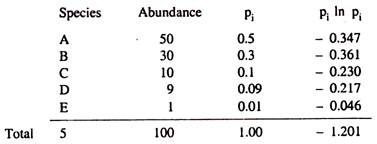Quick Notes on Williamsonia!
Williamsonia (Williamsonia sewardiana Sahni):
Systematic Position:
Gymnosperms
Class. Cycadopsida
Order. Cycadeoideales
Family. Williamsoniaceae
Genus. Williamsonia
The second type of Cycadeoideales (Bennettitales) is known as Williamsonias cycads. This group of plants was more ancient than Cycadeoidea (Bennettites). The group differs both from Cycadeoidea and cycads in some important features, in the stem anatomy and also in the form and structure of fructification.
An Indian type Williamsonia sewardiana Sahni has been described from the Jurrasic period. It was found in a silicified condition in Rajmahal Hills (Bihar) which is made up of upper Gondwana rocks.
The stem was erect; cylindrical and branched. The branches were covered up by scales and also the leaf bases.
The stem anatomy of this type was more like those of conifers. The pith, however, was large, dense compact mass of xylem and phloem and the cortex was comparatively narrow.
The strobili were borne on short branched lateral shoots. They differ from those of Cycadeoidea in that they were monosporangiate. In this Williamsonia sewardiana only the female has so far been described but Dr. Sahni himself was of opinion that this Indian form might have been bisporangiate. The specimen got separated from the strobilus.
The structure of female portion was practically like that of Cycadeoidea (Bennettites).The ovules were borne on short stalks which had interstaminal scales in between. The ovule structure was again that of Cycadeoidea (Bennettites).
The male strobilus rather which has been described in some other species bf Willianisonia had a number of stamens which fused together to form a cup or disc-shaped structure. The free parts of stamens had two rows of slender leaflets were absent and only stalks were present.
So either on leaflets or on stalks there were two rows of pollen sacs. This way, the male portion of Williamsonia was like that of Cycadeoidea. A large number of male strobili have been described, but no trace of female portion in them has been found, so these male strobili were evidently unisexual while the female ones might have been bisexual.
Genus. Williamsoniella (Williamsoniella angustifolia):
In other genus Williamsoniella, the strobilus was bisexual but round and there were no basal bracts, so it differed from Cycadeoidea only in the absence of bracts.
Affinities:
In many respects the Cycadeoideales resemble the ferns on one hand and the cycads on the other.
They resemble the ferns in the presence of a crown of leaves, persistent leaf bases, mesarch nature of vascular bundles direct course of leaf-traces through the cortical region. In Cycadeoidea the presence of synangium is much like that of ferns in which we know the sporangia are fused to form synangia.
The Cycadeoideales are closely related to Pteridosperinales on one hand and to cycads on the other but they have their own characteristic features which distinguish them from all other gymnosperms except the Gnetales; this important feature that separates the Cycadeoideales from other Gymnosperms is the presence of bisporangiate strobili.
Some types of this group had short columnar stems like most of the living cycads. The short columnar stem was usually un-branched and at the apex of the plant there was a terminal crown of leaves. In present day cycads the young leaves and megasporophylls remain covered up by unicellular ramenta whereas in Cycadeoideales these ramenta were scale-like. Like cycads the plants had well organized strobili or cones.
Majority of Cycadeoideales seem to have flowered only once in their life and after flowering the plant died out as we find in some of present angiosperms.




